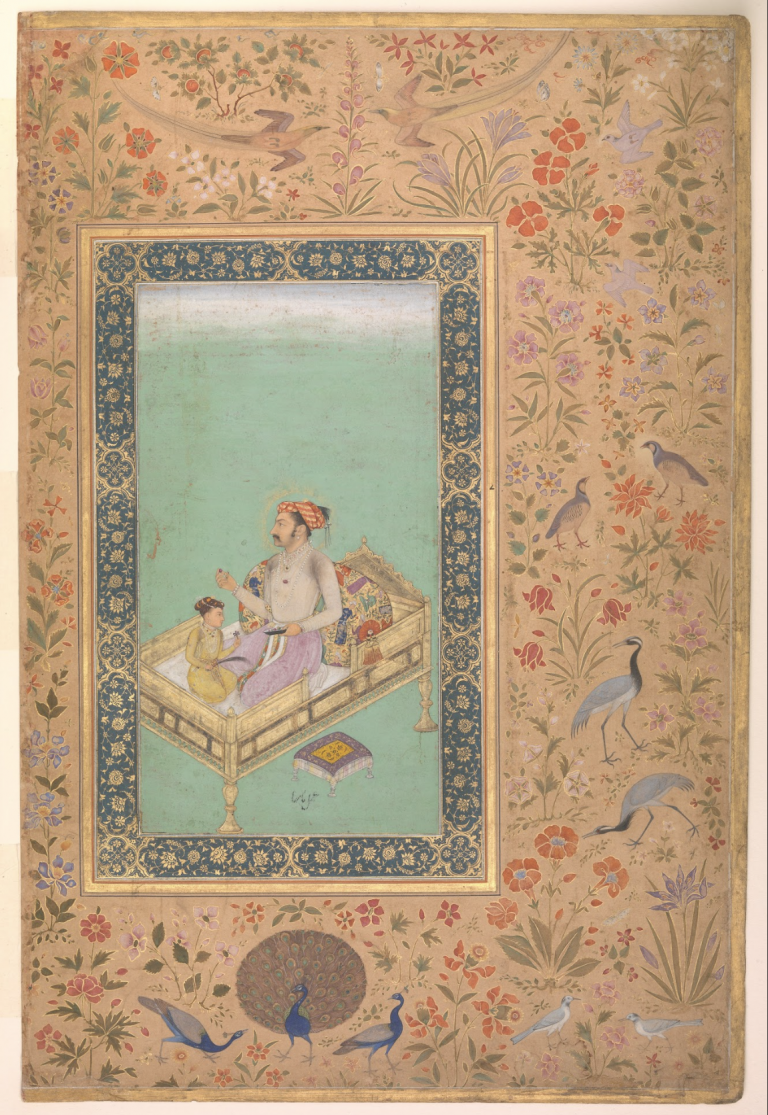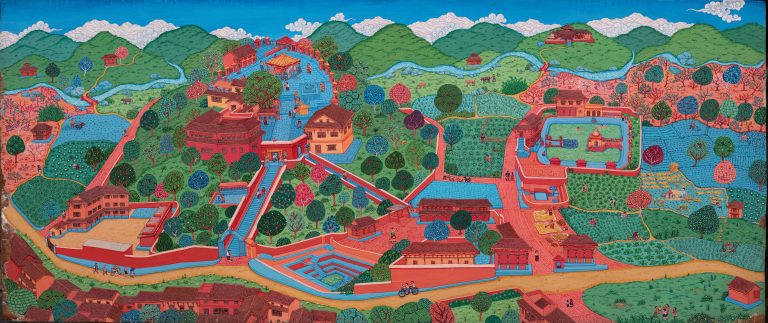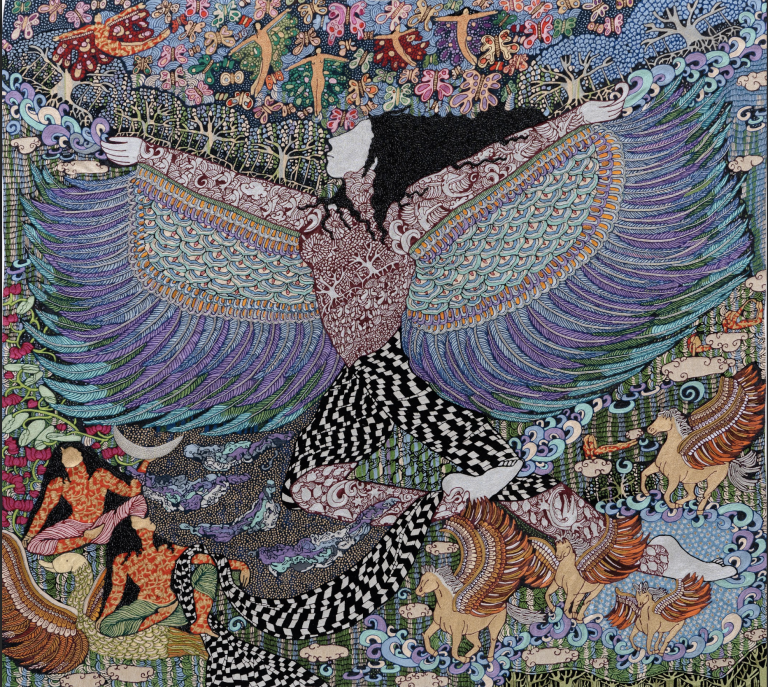Introduction text by Nancy Adajania

This text is by Gieve Patel published in Swaminathan’s journal Contra’66. It is a review of ‘Two Decades of American Painting’, a show held in Delhi, in 1967. This show on Abstract Expressionism was followed by a seminar on contemporary American and Indian art, the participants included the American critic Clement Greenberg and Indian artist Swaminathan, among others. ‘Two Decades…’ was a State department export signalling American soft power initiative during the Cold War. Although Patel does not necessarily display a familiarity with the hidden ideology of the Cold War politics, he raises larger and significant questions regarding the exportability of art, the portability of internationalism, the power of the curator and his/her relationship with the artist, and so forth.
Gieve Patel: The Decades and the Seminar
Swaminathan Ed. Contra’66, New Delhi, Hem Chandra, 1967
The ‘Two Decades of American Painting’ exhibition, displayed at New Delhi, April of this year, was not scheduled for other Indian cities. This, and the expected presence of Clement Greenberg at a seminar on Contemporary American and Indian art, caused a small but sizable influx into New Delhi of painters and writers who would not otherwise have availed themselves of a chance to come together from the four corners of the dispersing Indian subcontinent.
Bombay, Delhi, Culcutta, and the South were mainly represented: but despite regional differences in the general approach towards painting, there were a few salient predictable tensions that would determine a common attitude towards the exhibition and the seminar.
Most important of these would be the xenophobic – xenolatric crises of India, so brilliantly discussed by Nirad Chaudhari in his Continent of Circe. Mr.Chaudhari traces this conflict deep into Indian history. And surely he would argue that none would be more susceptible to these tensions that the so called ‘westernised progressives’ participating in the seminar. With due respect to Mr.Chaudhuri, however, I wish to suggest that the art community with its predilection for painful groping and the fact that often it has least to gain materially speaking, from most things, is better equipped to find someway over this very native hurdle into an area of reality; this hurdle being almost insurmountable to the more interested bureaucratic and political personnel that would constitute the rest of the ‘westernised progressives’.
Consider the case though: Some of the most widely publicised art of the century; one of the most distinguished art critics in the world today all of this aggressively foreign and a seminar at which both these would be forced into some sort of relationship with contemporary Indian Painting – one of the most mobile areas of artistic expression in India today.
A widely quoted joke, therefore, several weeks before the opening of the exhibition was that an hour after the opening, the Indian painter would be slashing his canvases with the brush strokes of Abstract expressionism; others, it continued, would be busy blowing up the nearest signboard to 10 x 10. The joke acknowledges an awareness of several Indian attitudes. First, the Indian dependence on the Western art-movement; (It may be noted here that in a similar context decades ago, the British exported to India not Constable or Turner, but the schools of Landseer and Lord Leighton. After years of marsh land India managed to reach at last some firm ground, helped by the influx of vital art in reproduction and the influence of Indian painters returning from the West.We are expressing here a small doubt: Is the officially exported contemporary art of a country ever representative of the most vital things then going on in that country? More on exportable art later). Then, the cynicism and self deprecation that developed from a consciousness of this weakness: Perhaps in the end a confidence, albeit uncertain, that this time he was equipped by time, experience and the new cynicism, to question the visitor more cogently. For an opening address External Affairs Minister Chagla well-meaningly parodied many of the attitudes discussed above.‘Modern’ Art is emotional and international, we were told. ‘Let yourself go’, ‘Take it all in’. He then expressed a hope of seeing contemporary Indian part reciprocally exhibited in America. Of this also, more lately.
The seminar was to open with a discussion on contemporary America art. The program was changed because participants expressed the wish to see the exhibition first. The walkthrough, with Mr. Greenberg as a guide, which was scheduled for later, became therefore a starting point for the seminar. In agreeing to this the Indian participants showed a willingness to be ‘told’, an indication of the general uncertainty of response to the paintings. These paintings had undoubtedly been seen previously in reproduction,but an encounter in the flesh brought to the surface a good deal of ambivalent feeling. It is impossible to guess with any accuracy what the Indian reaction may have been had the discussion preceded the walkthrough, whether at all it would have been materially different.
Mr.Greenberg, in any case was asked to break the ice. There was some grace in his agreeing to go through with the tour although he professed to believe that there was no purpose to that sort of thing. But he then proceeded quite to make his point. Barring a polite nod at Noland and Louis he dismissed the second generation Abstract and pop as ‘tasteful’, carrying the dead remains of Cubism, academic. The first generation was some of the greatest painting in the century.
Waldo Rasmussen attempted an initial defence. No, he did not believe de Kooning was finished by the early fifties,nor he did not believe de Kooning was responsible for the decadence of a great deal of contemporary American painting. It is at least strange however, that the Executive Director, Circulating Exhibitions, Museum of Modern Art, should have seemed to give up so easily as Clement Greenburg bulldozer through Rivers, Guston, Mitchell, Rauchenberg, Rosenquist. The Indian audience meanwhile was accommodating itself with great uneasiness to the hi-jinks. Greenberg is a tough guy, Greenberg has reasons to rate Stella a minor painter (he reflects the shape of the canvas),He has reasons to declared Newman a master (he too, reflects the shape of the canvas). When asked to explain the contradiction Greenberg could offer absolute criterion – ‘This moves me’. To be sure he did not overtly suggest we should feel the same way. But in the absence of criteria more patiently arrived at, what was one to think? This perpetual refrain Mr. Greenberg resorted to through the exhibition, the seminar, the concluding lantern-slide lecture. The latter ended with an absolute chant and we could feel the numbed audience attempting to match the incantation inwardly in its own mind:‘I like that one’. ‘That’a masterpiece’, ‘Minor but good’,‘Minor but bad’,‘Good’,‘Bad’, ‘Awful’.
A solitary note of any importance was sounded at this session. The work we had seen, it was suggested by some of the Indian participants, was feverish activity in a small, cornered area of painting. The activity was valid enough within that limitation, the discoveries were of importance, but had reached already a point where further activity in the same direction would be ‘incestuous’. This would account also for the obvious repetitiveness of the work.And related to this context was the most intelligent explanation we were later offered for the large size of paintings: that being, in fact a distilled, cornered, statement, they would relatively have to be blown up quite to make their point.
By the end of this session shocks had fairly been absorbed and at private beer parties clear assessments were being made.
This was partly the reason,the next session – the one on contemporary Indian art moved with greater freedom. Also it was sure ground for the participants. Greenberg, as chairman suggested that the charge was that modern Indian art was derivative of the West should be fully discussed. This was not a statement he would like to make, he said, but he had been hearing it from others—from non–painters mostly. A good deal of simple information emerged from this discussion, but the main issue was sidetracked by an India defence that ranged from naked to disguised chauvinism, strangely the detractors of contemporary Indian art seemed hardly more to the point. The most intelligent remarks were those of cautious optimism. The most revealing ones,however, referred to Yoga.The metaphysical has an incorrigible attraction for the Indian – at the most mundane levels also, his salvation or his doom. This became more and more apparent in the next session which discussed general trends in contemporary art. The college student who blossomed into the Upanishads, and Dr. Ray, Director of Advanced Studies, would seem separate by years of merest flesh. The afternoon floated on a beautiful vagueness till painter Samant, white with rage, declared he didn’t understand a word of what was going on. It was brought home to us that the Indian painter, by acquiescence or rejection, would need consciously to come to terms with this predilection for mystic vagueness that so pervades the country.
Most vociferous champion of the mystic direction was painter Swaminathan. Henear sabotaged the earlier sessions by insisting that participants converse in ‘poetry’, not in cliché. The later sessions veered under his groping metaphysics. He was all the same a breath of fresh air, gave the only performance distantly matching Mr. Greeberg’s and when condemned at the conclusion by Messer. Greenberg and Rasmussen for attempting throughout to draw attention to himself, he offered to these gentlemen a final, desperate area of amity.
The beer parties continued through the conclusion of the seminar. Reaction was beginning to take definite shape. There was in the air a slow and cautious feeling that whatever the contribution of Abstract Expressionism and American Pop to 20th century art, it was likely to have little direct influence on the general direction contemporary Indian art was taking. The American statement seemed too complete in its own context, and offered an impassive façade which would resist investigation. The Indian painter would be in search of an art either frankly mystical (and Klee would seem more to purpose here), or one enriched at least by severe questioning of the ‘incestuous’ corner.
One aspect of contemporary art, of utmost importance, was completely ignored at the seminar. It is no secret that high pressure commerce, directs a good deal of art – good or bad – in theWest today. Whenever this fact seemed about to raise its head it was quickly pushed under water either by the idealism of theIndian participants, or by Mr. Greenberg’s refusal to ‘motivate’. The concept of the exportability of painting, vaguely touched upon in the beginning, was publicity resurrected by Mr. Greenberg at the conclusion. Now watch this:
The exhibition was the selection of Waldo Rasmussen. Mr. Greenberg made it very clear very early in the proceedings that he disagreed with a large part of the selection. In the concluding lantern slide lecture entitled ‘The Continuity of Contemporary American Art’ Mr. Greenberg, having an opportunity to shawl his choice, excluded a large number of second generation painters and the Pop movement in Toto! Olitski, the one second generation painter not represented in Mr. Rasmussen’s exhibition, was represented by an overwhelmingly large number of slides in Mr. Greenberg’s lecture. We were told also that Olitski had been awarded a prize at the Decades exhibitor.
Milton Avery and Dibencorn, the only non-abstract painters shown by Mr. Greenberg, were pronounced inexorable. Avery good painter, we were told, may be non-exportable because there were likely to be painters in other countries as good in his particular kind of way. The concept of exportability was therefore revealed as having to do with the image of a country producing a certain exclusive ‘brand’ of work that is at the same time consistent with the taste of an official internationalism.
The astonishing thing was that Mr. Greenberg refused to take any kind of a moral stand on this. The situation ‘exists’. Olitski should have been represented (the Biennale, etc.). A shrug of the shoulders for Avery and Dibencorn; their merit as painters seemingly a distant consideration.
To be most explicit, were a critic of influence to question strongly the artificial premise of exportability, could it not shake the structure of our biennales, threaten the claims of art-commerce, radically challenge the presumption of an arid internationalism, and point a way out of the dead end of today?
More locally, what is theIndian painter faced with in making his art ‘exportable’,without at the same time degrading it?
Article courtesy: Gieve Patel and Nancy Adajania














